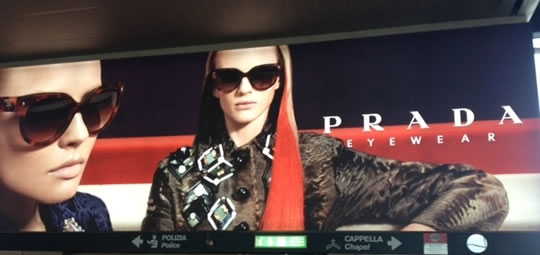Australia’s skills shortage crisis shows no signs of abating.
According to the Department of Education, Employment and Workplace Relations, an incredible 43 per cent of skilled industries – based on 76 occupations continually assessed by the Department – have experienced skills shortages in the past 12 months.
Improving these statistics is one of the motivators behind Sydney-based business Get Qualified Australia. Established in 2010, the company has positioned itself as the country’s leading exponent of Recognition of Prior Learning (RPL) through Skills Recognition – providing stepping stones to not only a higher skilled workforce, but greater career satisfaction among individuals.
Get Qualified Australia is the brainchild of Adam Wadi, born out of his own successful experience with RPL.
RPL was introduced in Australia via the AQF (Australian Qualifications Framework) in 1993 as a way of any individual’s pre-existing skills, knowledge and experience to be credited towards a formal, nationally-recognised qualification.

Adam came face-to-face with the process in 2005, when his practical background in hotel management allowed him to quickly and easily obtain an Advanced Diploma in Management through the Australian Business and Retail Academy.
“I was very impressed with how the RPL process worked,” he recalls.
“My years of experience in the hospitality and tourism sector were formally recognised, and my Advanced Diploma started the next phase of my career.”
With a new qualification under his belt, Adam moved into delivering training courses at hotel schools across Australia. His own positive experience with RPL led to him explaining and recommending it to his friends and colleagues in the hospitality industry, and in a short space of time he referred close to 200 people to the process.
His hospitality career was at its peak, but the entrepreneur saw a new business opportunity on the horizon.
“I saw the scope to partner with a range of Registered Training Organisations (RTOs) to offer people a substantial number of qualification options through RPL,” he says.
Adam was committed to remaining independent and, more importantly, offering a wider range of qualifications across a greater number of industries than existing companies ever before.
Get Qualified Australia’s credentials were evident from its inception, courtesy of partnerships with the Management Institute of Australia – to supply nationally-recognised training courses to candidates – and MEGT, a non-profit organisation that specialises in employment, education, training and apprenticeships.
Adam’s vision pioneered the early days of Get Qualified Australia. The company positioned itself as the country’s leading RPL specialist, but branched out to form partnerships with reputable RTOs to offer a variety of nationally-recognised qualifications through the RPL process.
Across time, Get Qualified Australia began to offer a detailed selection of personally tailored training, staff development and assessment solutions to meet the requirements of individuals and businesses.
Simply, the company is a ‘one stop shop’ that offers a range of educational, training, RPL and Skills Recognition services under the one umbrella.
Among the thousands of Australians to have benefited from GQ Australia’s services is Sydney’s Steve Rodwell, who completed a Certificate IV of Training and Assessment based on the RPL and Skills Recognition process. He now utilises his Management and business background as a Lecturer in Hotels Management and Marketing at the Intercontinental Hotel School.
From its inception, Get Qualified Australia recognised technology as a crucial way of targeting its audience, and implemented a number of online resources to make the entire process as straightforward as possible for candidates.
These resources included a secure e-Learning portal, offering a comprehensive range of learning and assessment options monitored by Get Qualified Australia’s RTO partners, and a series of YouTube tutorials to explain RPL in plain English.
More than three years later, Get Qualified Australia is the country’s number one RPL and skills recognition specialist. Adam and his team of qualified RPL Skills Recognition Assessors have underpinned the company with exceptional levels of customer service and tangible results.
Through its partnerships with RTOs, Get Qualified Australia now offers access to more than 400 qualifications across industries such as business, construction, information technology, transport and tourism – and there’s an even bigger picture in mind.
“We’re working towards getting 500 qualifications in the very near future, and 1,000 qualifications by the end of the year,” says Adam.
“There’s near limitless scope for what RPL can offer, from working towards a nationally-recognised qualification in a field you had previously never thought of pursuing a career in, to obtaining a Graduate Diploma to vastly boost your personal and professional development,” says Adam.
“We are proud of our status as Australia’s premier RPL and Skills Recognition specialist, and look forward to further developing our range of qualifications and tailor-made training solutions.”
About Get Qualified Australia
Get Qualified Australia is one of Australia’s leading RPL and Skills Recognition specialists.
Founded in 2010, the company provides a range of Vocational Education and Training (VET) services for local, national and international clients, in line with Partnership Agreements with Registered Training Organisations (RTOs).
Through its RTO partners, Get Qualified Australia offers more than 400 nationally-recognised qualifications in industries such as hospitality, business, construction and trades, information technology, transport and many more.
Get Qualified Australia utilises skills recognition systems developed in consultation with RTOs, VET stakeholders, Industry Skills Councils and key industry groups to offer tailored training, staff development and assessment solutions to individuals and businesses.
www.gqaustralia.com.au













